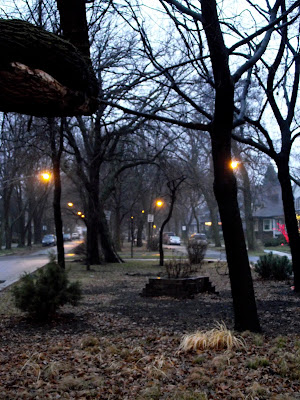 |
| Classy homes along Irving Park Road |
Irving Park can technically be broken up into a few smaller
neighborhoods. The western half is
often referred to as “Old Irving Park”.
Sometimes Mayfair and Kilbourn Park are considered parts of the Irving
Park community area as well. There
is a tiny historic section called “The Villa”, a triangle of hundred-year old
homesteads. An explanation of The Villa is shown below.
The boundaries: The boundaries of the Irving Park community
area are somewhat erratic, so it’s probably best to refer to the map at the
bottom of the page. Generally
though, they are Montrose to the north, Addison to the south, the Chicago River
to the east, and the Milwaukee District-North railroad tracks to the west. As you head further west in the community area, the northern boundary becomes Lawrence and the southern boundary becomes
Belmont.
 |
| Tree-covered public space divides several of the boulevards that run through the Villa District |
The 2010 population of the Irving Park community area was
53,359, a decrease of 9% from its 2010 census count of 58,643. The racial breakdown of the
neighborhood is 45.8% Hispanic, 41.7% white, 6.9% Asian, and 3.2% black.
A brief history: The Irving Park area was originally intended
to be a farming settlement.
However, realizing the value of the land due its proximity to downtown
Chicago, Charles T. Race decided it was an
opportunity better suited for residential development. Originally an upscale suburb of
Chicago, it was annexed into the City in 1889. The community area reached a population
of over 65,000 in the 1930, sparked by immigration, particularly from Eastern
Europeans in the preceding decade.
Over the years, Irving Park has become most well known for its historic
residential area, the Villa District, a small residential triangle of land
still predominantly featuring bungalows nearly one hundred years old. The Villa’s borders are essentially
Pulaski Road to the west, Addison Street to the south, and the Kennedy
Expressway (I-90/94) to the northeast.
 |
| Commerce mixing with residential at Kimball & Elston |
Getting there: The “L” is a more-than-serviceable option. The Blue Line has three stops in the
neighborhood: Montrose, Irving Park, and Addison.
If travelling by bus, your best east-west bets are: Montrose
(78), Irving Park (80), and Addison (152). You can also take Lawrence (81) to the far northwest corner
and Belmont (77) to the far southwest corner of the neighborhood. Going north-south you can take Pulaski (53), Kimball (82), and
California (52). Also, the
Milwaukee bus (56) goes through a northwest-southeast sliver of the
neighborhood.






























